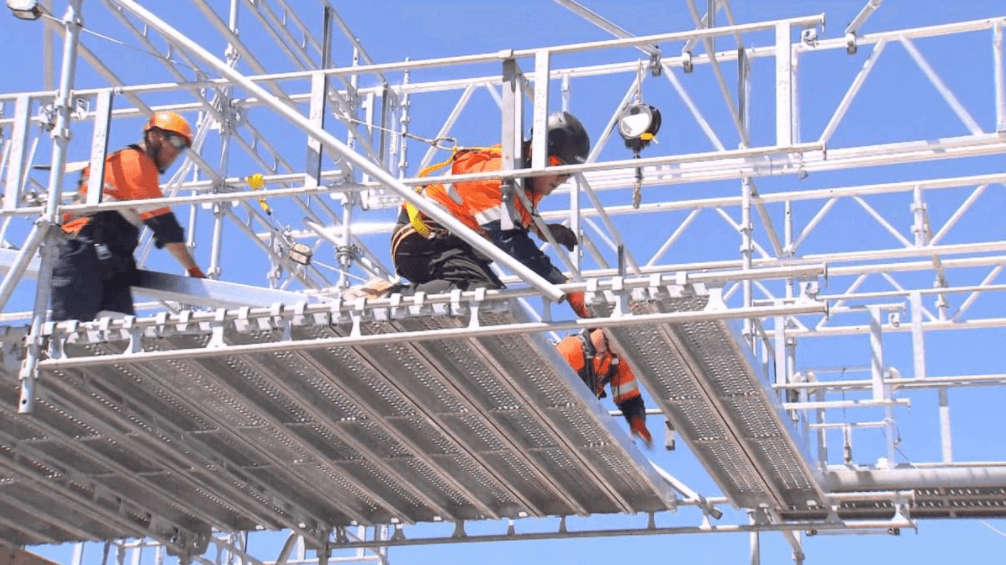Scaffolding is a temporary type of “stage” or structure built to support builders during construction. It also creates leverage when they need to reach or work on high areas in a construction site.
Also called staging, the use of the technique dates back to more than 17, 000 years. It means that ancient civilization already proved its effectiveness.
Typically, the scaffolds or platforms are made of either bamboos and timbers or steel. It is also composed of several mechanisms added to boost its stability. The mechanisms include horizontal, vertical, and diagonal attachments between the scaffold and the wall. Additionally, it also has guard rails and boards that ensure well-rounded protection during construction.
Without scaffolding, the safety of workers in a construction site could be at risk, and accidents become more challenging to control.
To gain a deeper appreciation of the importance of scaffolding, enumerated below are five of its critical roles in architectural projects:
It speeds up the building process.
With the help of a stable scaffold, construction workers can reach high areas of the structure they are working on more easily. It also helps spread the tasks more evenly, since workers will not have to rely heavily on their fellow constructors to provide them with the support and stability they need. If there are quick fixes required in different areas of the structure, many staff can work on it simultaneously.
It minimizes casualties.
One of the significant risks in construction sites is the safety and protection of the workers. The number of tasks that need to be done in erecting a building or structure can be overwhelming that, at times, safety measures tend to be inefficient. Since workers have a solid structure or platform to step on and use to balance themselves while working, supervising work becomes easier. Scaffolds assure that workers are kept from harm and that they have a solid structure to balance on while on site.
It promotes repurposing for future use.
Creating new platforms to step on can take time. It takes a significant amount of focus away from the actual project. Fortunately, even after the project is done, Scaffolding can be reused for other construction, repair, and renovations needed in other sites, establishments, or residential properties. The more stable the scaffold, the more times it can be reused.
It fits different types of repairs and maintenance work.
There are different types of scaffolding. Some are designed for distempering and painting, and some are built to provide enough support for room repairs, while there are also scaffolds that are more durable and provide support for renovations that take more time to complete.
It saves space and prevents obstructions.
The use of ladders and other unstable platforms causes unnecessary impediments at work. Ladders are also not advisable for maintenance done along the road. It is risky, time-consuming, and affects the flow of tasks and traffic. In contrast, suspended scaffolding minimizes obstacles on the ground, making it easier for workers to move around.
When constructions and renovations are done with the utmost care, it produces breathtaking structures and edifices. More importantly, safety measures in the form of scaffolding push building companies and contractors to always prioritize the wellbeing of their staff before, during, and after the project.



